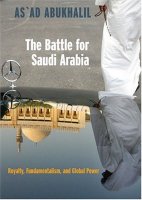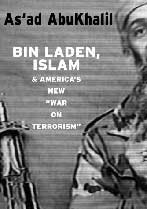"The United States was intimately involved in the enlistment of these volunteers — indeed, many of them were signed up through a network of recruiting offices in this country. The guiding light in this effort was a charismatic Palestinian cleric, Abdullah Azzam, who founded Maktab al-Khidamat (MAK), also known as the Afghan Services Bureau, in 1984, to raise money and recruits for jihad. He was assisted by a wealthy young Saudi, Osama bin Laden. The headquarters for the U.S. arm of the operation was in Brooklyn, at the Al-Kifah Refugee Center on Atlantic Avenue, which Azzam invariably visited when touring mosques and universities across the country.
“You have to put it in context,” argued Ali Soufan, a former FBI agent and counterterrorism expert who has done much to expose the CIA’s post-9/11 torture program. “Throughout most of the 1980s, the jihad in Afghanistan was something supported by this country. The recruitment among Muslims here in America was in the open. Azzam officially visited the United States, and he went from mosque to mosque — they recruited many people to fight in Afghanistan under that banner.”
American involvement with Azzam’s organization went well beyond laissez-faire indulgence. “We encouraged the recruitment of not only Saudis but Palestinians and Lebanese and a great variety of combatants, who would basically go to Afghanistan to perform jihad,” McWilliams insisted. “This was part of the CIA plan. This was part of the game.”The Saudis, of course, had been an integral part of the anti-Soviet campaign from the beginning. According to one former CIA official closely involved in the Afghanistan operation, Saudi Arabia supplied 40 percent of the budget for the rebels. The official said that William Casey, who ran the CIA under Ronald Reagan, “would fly to Riyadh every year for what he called his ‘annual hajj’ to ask for the money. Eventually, after a lot of talk, the king would say okay, but then we would have to sit and listen politely to all their incredibly stupid ideas about how to fight the war.”
Despite such comments, it would seem that the U.S. and Saudi strategies did not differ all that much, especially when it came to routing money to the most extreme fundamentalist factions. Fighting the Soviets was only part of the ultimate goal. The Egyptian preacher Abu Hamza, now serving a life sentence on terrorism charges, visited Saudi Arabia in 1986, and later recalled the constant public injunctions to join the jihad: “You have to go, you have to join, leave your schools, leave your family.” The whole Afghanistan enterprise, he explained, “was meant to actually divert people from the problems in their own country.” It was “like a pressure-cooker vent. If you keep [the cooker] all sealed up, it will blow up in your face, so you have to design a vent, and this Afghan jihad was the vent.”" (thanks Frank)
“You have to put it in context,” argued Ali Soufan, a former FBI agent and counterterrorism expert who has done much to expose the CIA’s post-9/11 torture program. “Throughout most of the 1980s, the jihad in Afghanistan was something supported by this country. The recruitment among Muslims here in America was in the open. Azzam officially visited the United States, and he went from mosque to mosque — they recruited many people to fight in Afghanistan under that banner.”
American involvement with Azzam’s organization went well beyond laissez-faire indulgence. “We encouraged the recruitment of not only Saudis but Palestinians and Lebanese and a great variety of combatants, who would basically go to Afghanistan to perform jihad,” McWilliams insisted. “This was part of the CIA plan. This was part of the game.”The Saudis, of course, had been an integral part of the anti-Soviet campaign from the beginning. According to one former CIA official closely involved in the Afghanistan operation, Saudi Arabia supplied 40 percent of the budget for the rebels. The official said that William Casey, who ran the CIA under Ronald Reagan, “would fly to Riyadh every year for what he called his ‘annual hajj’ to ask for the money. Eventually, after a lot of talk, the king would say okay, but then we would have to sit and listen politely to all their incredibly stupid ideas about how to fight the war.”
Despite such comments, it would seem that the U.S. and Saudi strategies did not differ all that much, especially when it came to routing money to the most extreme fundamentalist factions. Fighting the Soviets was only part of the ultimate goal. The Egyptian preacher Abu Hamza, now serving a life sentence on terrorism charges, visited Saudi Arabia in 1986, and later recalled the constant public injunctions to join the jihad: “You have to go, you have to join, leave your schools, leave your family.” The whole Afghanistan enterprise, he explained, “was meant to actually divert people from the problems in their own country.” It was “like a pressure-cooker vent. If you keep [the cooker] all sealed up, it will blow up in your face, so you have to design a vent, and this Afghan jihad was the vent.”" (thanks Frank)








